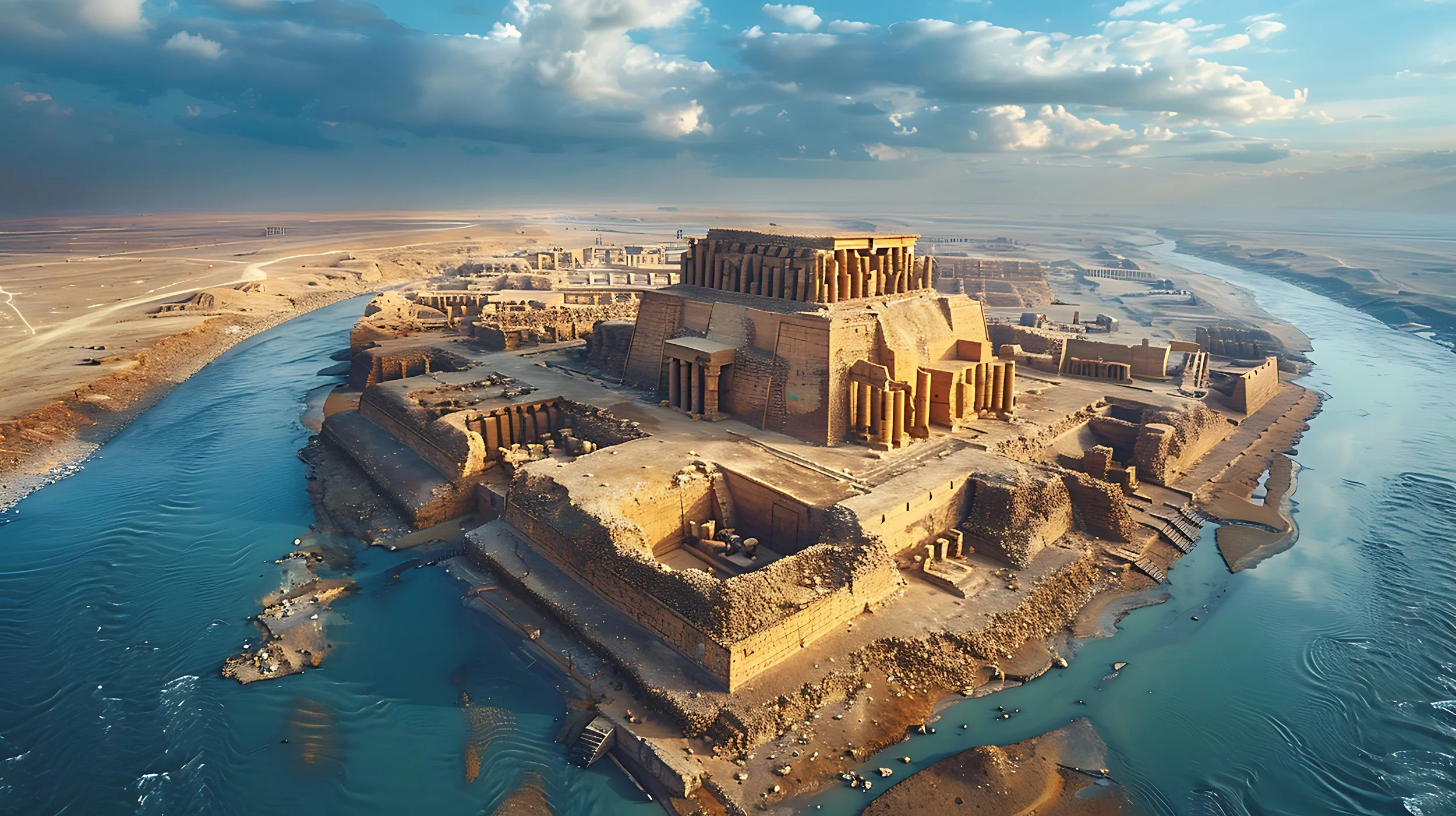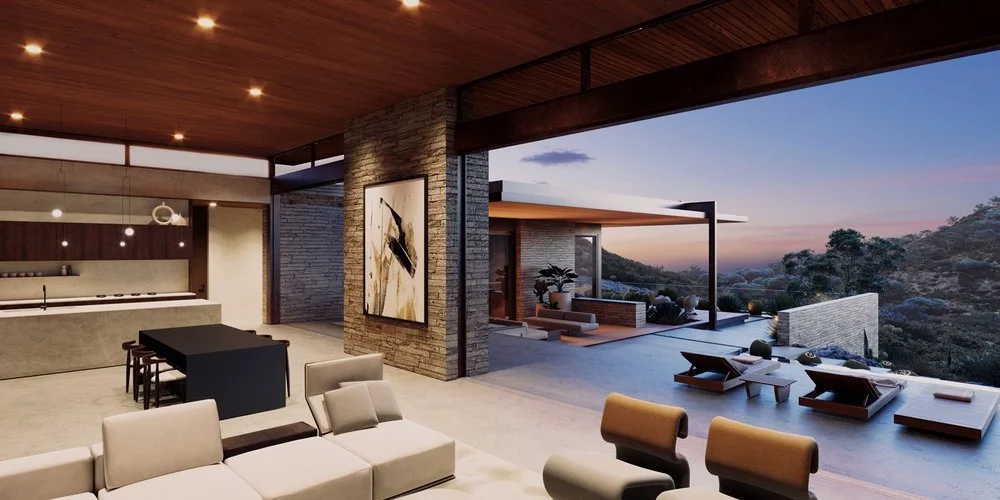Alexandria, a city that reshaped history, was a beacon of intellectual progress in the ancient world. Its architecture and urban planning were not just physical structures, but a repository of knowledge, wisdom, and culture. The city's unique identity, deeply rooted in the written word, fostered an environment where knowledge was not just valued, but revered and rewarded. This radical concept of knowledge as power, distinct from traditional means such as control of a food source, trade, or military power, led to the creation of one of the most revered cities in human history, rivaling the likes of ancient Athens and Rome.
Read MoreNotre Dame Cathedral had the power to embed itself into more than just the cityscape. It made its way into the hearts of the people of Paris. When the Cathedral was engulfed in flames on April 15th, 2019, we were reminded that the architecture around us impacts our lives beyond functionality. Principal and Architect of ROST Architects, Mitchell Rocheleau, discusses the history, architecture, and the architectural power of Notre Dame Cathedral.
Read MorePrincipal and Architect of ROST Architects, Mitchell Rocheleau, meets with Jonathan Foyle, lecturer, historian, and broadcaster. Author of "Lincoln Cathedral: The Biography of a Great Building."
Read MoreInvestigating why our ancestors began building architecture and congregating in cities can reveal fundamental insights about human nature. There is no better place to start than with the development of the first cities in ancient Mesopotamia. The city has always been where people congregate, and ideas, innovation, and progress flourish. People come to the city to reinvent and express themselves and test and share their ideas, wherein, simultaneously, culture evolves and civilization progresses. Since their conception, cities have always been nuclei of human advancement.
Read MorePrincipal and Architect of ROST Architects, Mitchell Rocheleau, discusses the significance of The Grand Louvre designed by Architect I.M. Pei, the history of the Louvre, design process, design theory and ideas behind the project.
Read MorePrincipal and Architect of ROST Architects, Mitchell Rocheleau, meets with Keiran Murphy, a nationally recognized historian on Frank Lloyd Wright and his estate in Spring Green, Wisconsin, home of the Taliesin Fellowship.
Read MorePrincipal and Architect of ROST Architects, Mitchell Rocheleau, meets with John Lobell, a professor at Pratt Institute and expert on Louis Kahn, to discuss the architecture and philosophy of Louis Kahn.
Read MoreWhat makes Stonehenge so captivating? This enigmatic Neolithic monument offers a window into our past and the lives of our ancestors. Stonehenge provides insights into their values, societal norms, and psychology. It unveils their astonishing level of sophistication, intricate communication networks, complex collaboration methods, and a deeply intuitive community with a profound understanding of materials, construction techniques, ecology, and astronomy. This megalithic marvel has the potential to enlighten us about our own journey and the evolution of our species.
Read MoreI want to take you on a journey back in time in the southwest of present-day Britain, near a bend in the river Avon. Here, a natural geological process dispelled warm, mineral-rich water from deep within the earth.
The ancient people who inhabited this area believed these healing and mystical waters were a gift from the gods and were presided over by an ancient goddess named Sulis.
Read MorePrincipal and Architect of ROST Architects, Mitchell Rocheleau, discusses the importance of The Farnsworth House designed by Architect, Mies van der Rohe and its role in modern architecture, challenging the conventions of the time.
Read MoreWhy is Taliesin West significant in the history of American culture and Architecture? Taliesin West was a petri dish breeding a new lifestyle based on freedom, connection with nature, and a spirit of innovation. It challenged the conventional way of living at the time through its philosophies, daily rituals, and the work that was produced there. Most importantly, its architecture was a direct reflection of this lifestyle.
Read MorePrincipal and Architect of ROST Architects, Mitchell Rocheleau, discusses how Louis Kahn developed his architectural philosophy and how this is reflected in his existing designs.
Read MorePrincipal and Architect of ROST Architects, Mitchell Rocheleau, discusses how ROST Architects' design philosophy incorporates the existing landscape and environment of a property into its residential designs, allowing nature to lead the way and providing inhabitants the experience of a reconnection and grounding with the nature that surrounds them.
Read MoreLouis Kahn's architecture tells a larger story about a cultural shift in America in the first half of the 20th century. It was the shift into Modernism and a departure from historical traditions of the past. Ignited by the ideas of the Enlightenment, where rationalism, individualism, and science reigned supreme, these ideas spawned a new modern architectural movement that catalyzed a departure from historical traditions. Efficiency, profit, abstraction, and mechanization drove the new modern architecture
Read MoreRost Architects summarizes how its design philosophy incorporates the existing landscape and environment of a property into its residential designs, allowing nature to lead the way and providing inhabitants the experience of a reconnection and grounding with the nature that surrounds them.
Read MoreIdentifying how a society's collective psychology is reflected in our current built environment, Principal and Architect of ROST Architects, Mitchell Rocheleau, discusses how we can begin to create an environment that is more conducive to an authentic human experience.
Read MoreReflecting on what a city's layout and its most prominent buildings portray, Principal and Architect of ROST Architects, Mitchell Rocheleau, discusses what impact he believes this has on the values emphasized by a city and how this affects the human experience.
Read MoreDeep into our ancient past, humans have been building sacred spaces. These came in the form of megalithic monuments, temples, ziggurats, pyramids, cathedrals, shrines, and mosques, among countless others. Spirituality, ritual, myth, and religion consumed their daily lives. Our ancestors created sacred spaces on Earth to honor and connect with their gods and the heavens.
Read MoreIn many modern cities, there seems to be a lack of institutions and structures offering life guidance, emotional development, mental health, spirituality, and helping people find answers to life’s more significant questions.
Read MoreInfluenced by travel in European cities, life in North American cities, and authors such as Jane Jacobs, and Danish architect, Jan Gehl, Principal and Architect of ROST Architects, Mitchell Rocheleau, discusses what he believes are characteristics of captivating cities.
Read More



















